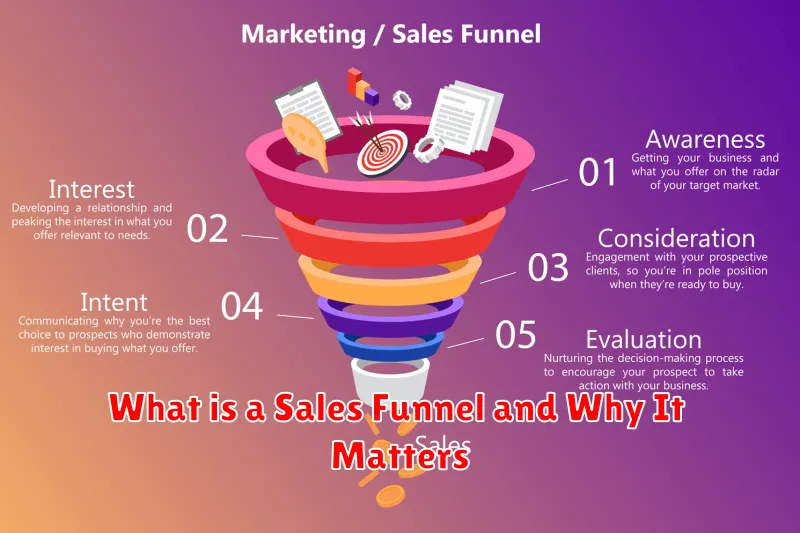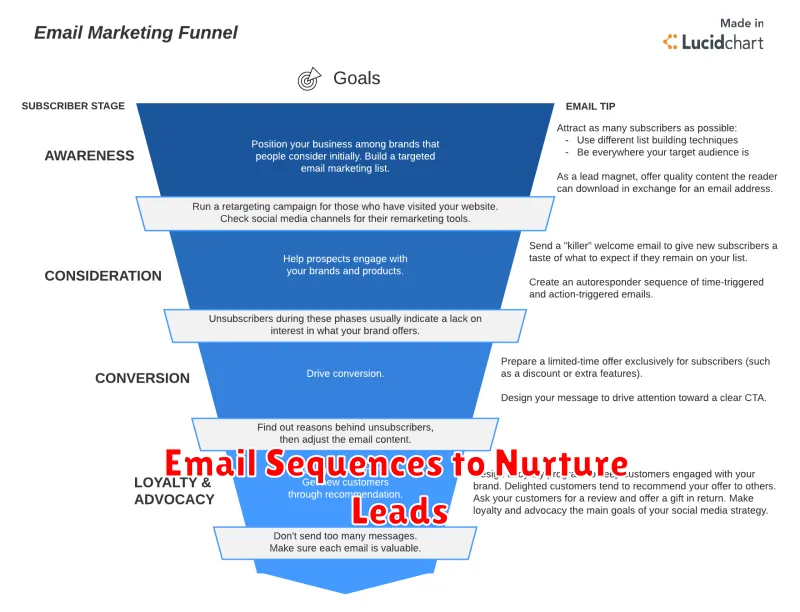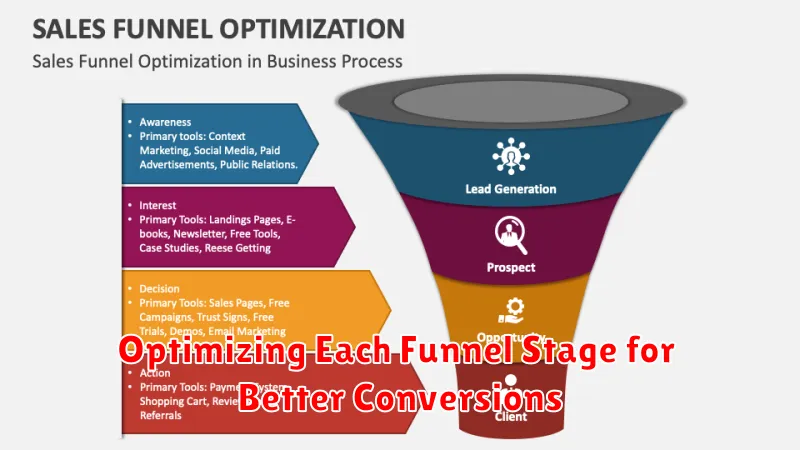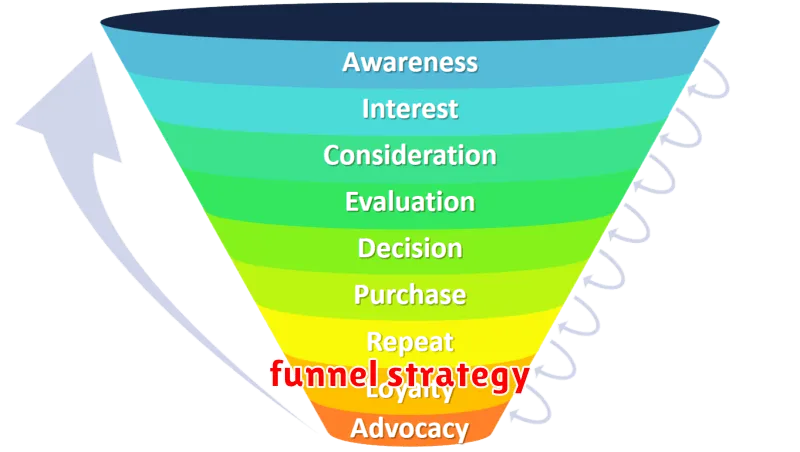Are you struggling to convert leads into paying customers? Building a high-converting sales funnel is crucial for any business’s success. This comprehensive guide will walk you through the process of creating a sales funnel that effectively captures leads, nurtures them, and ultimately drives sales. Learn how to design each stage—from attracting potential customers with compelling marketing to closing the deal with a strong call to action—and increase your conversion rates significantly. Discover proven strategies to optimize your funnel and boost your bottom line. This is your ultimate resource for mastering the art of sales funnel creation and achieving consistent growth.
What is a Sales Funnel and Why It Matters

A sales funnel is a visual representation of the customer journey, outlining the steps a prospect takes from initial awareness of your brand to becoming a paying customer and, ideally, a loyal advocate. It’s a structured process designed to guide potential customers through various stages, ultimately converting them into sales.
Understanding and optimizing your sales funnel is crucial for business growth. A well-designed funnel helps you identify bottlenecks, improve conversion rates, and increase revenue. By understanding where prospects drop off, you can refine your marketing and sales strategies to address those pain points and nurture leads more effectively. Effective funnels lead to higher conversion rates, increased customer lifetime value, and ultimately, a stronger, more profitable business.
The stages typically involve awareness (introducing your brand and product), interest (engaging prospects and providing valuable content), decision (presenting your offer and addressing objections), and action (completing the purchase). Analyzing each stage allows you to pinpoint areas for improvement and create a more efficient and persuasive customer journey.
Stages of a Sales Funnel Explained
A sales funnel guides potential customers through the buying process, from initial awareness to final purchase. Understanding each stage is crucial for effective conversion.
Awareness: This initial stage focuses on attracting potential customers. Strategies include content marketing, social media, and SEO to build brand recognition and generate leads.
Interest: Once aware, prospects need to be engaged. Providing valuable content like blog posts, webinars, or free trials nurtures interest and establishes your brand as a helpful resource.
Decision: Here, prospects weigh the pros and cons of your offering. Case studies, testimonials, and comparisons with competitors help sway their decision towards your product or service.
Action: This is the conversion stage. A clear and compelling call to action (CTA) – like a “Buy Now” button or a free consultation offer – drives prospects to make a purchase.
Retention: The final stage involves retaining customers through excellent customer service, loyalty programs, and ongoing engagement. This fosters repeat business and brand advocacy.
Successfully navigating these stages requires a well-defined strategy, consistent messaging, and meticulous tracking of key metrics. Optimizing each stage ensures a high-converting sales funnel.
How to Capture Leads with Landing Pages and Lead Magnets
A sales funnel relies heavily on capturing leads. This is efficiently done using targeted landing pages paired with compelling lead magnets.
Landing pages are single-purpose web pages designed to convert visitors into leads. They should be concise, visually appealing, and focused on a single call to action (CTA).
A lead magnet is a valuable piece of content offered in exchange for contact information (e.g., email address). Examples include eBooks, checklists, webinars, templates, and free trials. It should directly address a pain point or offer a solution relevant to your target audience.
The process involves directing traffic (through ads, social media, or other channels) to a landing page where visitors are presented with the lead magnet in exchange for their information. This captured data then fuels your marketing efforts and allows you to nurture leads through your sales funnel.
Effective landing pages often feature clear headlines, strong calls to action, compelling visuals, and a simple, user-friendly design. Ensure the design and content align perfectly with your lead magnet’s promise.
By strategically combining high-quality lead magnets and well-designed landing pages, you can significantly improve your lead generation and overall conversion rates within your sales funnel.
Email Sequences to Nurture Leads

Email sequences are crucial for nurturing leads within a sales funnel. They allow for automated, personalized communication that keeps your prospects engaged and moves them closer to conversion.
Effective email sequences should be segmented based on lead behavior and demographics. This ensures the right message reaches the right person at the right time. Consider factors like website activity, download history, and previous email interactions.
A well-structured sequence typically begins with a welcome email, followed by a series of emails providing valuable content, addressing common objections, and ultimately presenting a clear call to action (CTA).
Content is key. Each email should offer something of value to the lead, educating them, solving a problem, or providing helpful information. Avoid hard-selling in early stages; focus on building trust and rapport.
Personalization is paramount. Dynamic content, such as using the lead’s name and referencing their specific interests, improves engagement and conversion rates significantly. A/B testing different subject lines and email content is essential for optimization.
Tracking and analysis are vital for improving your email sequences. Monitor open rates, click-through rates, and conversions to identify areas for improvement. Regularly review and refine your sequences based on data insights.
How to Convert Leads into Paying Customers
Converting leads into paying customers requires a multi-faceted approach focused on nurturing relationships and demonstrating value. Effective communication is key; tailor your messaging to each lead’s specific needs and pain points.
Targeted email marketing plays a crucial role. Segment your audience and send personalized emails that offer valuable content, address their concerns, and guide them towards a purchase.
Provide exceptional customer service throughout the sales process. Address inquiries promptly, offer personalized support, and build trust. This fosters loyalty and increases the likelihood of repeat business.
Offer compelling calls to action (CTAs) at each stage of the funnel. Make it easy for leads to take the next step, whether it’s requesting a demo, downloading a resource, or making a purchase.
Track your results and analyze the performance of your sales funnel. Identify areas for improvement and continuously optimize your strategies to maximize conversions. A/B testing different approaches is vital for identifying what resonates best with your audience.
Finally, understand your customer’s journey. Map out their path from initial awareness to final purchase to identify potential friction points and address them proactively.
Tools to Build and Manage Sales Funnels
Several tools are available to streamline the creation and management of sales funnels. The best choice depends on your specific needs and budget.
Email marketing platforms like Mailchimp, ConvertKit, and ActiveCampaign are essential for nurturing leads and delivering automated email sequences. They often integrate with other funnel-building tools.
Landing page builders such as Leadpages, Unbounce, and Instapage allow you to create high-converting landing pages tailored to specific stages of your funnel. They provide features for A/B testing and optimization.
Website builders with integrated marketing features, such as Wix and Squarespace, can be used to build simpler funnels. However, for complex funnels, dedicated platforms are often more efficient.
All-in-one marketing automation platforms like HubSpot and ClickFunnels offer comprehensive solutions, integrating email marketing, landing page creation, analytics, and CRM functionalities. They are usually more expensive but provide a streamlined workflow.
CRM (Customer Relationship Management) systems like Salesforce and Zoho CRM help you manage customer interactions and track progress through the funnel. Integration with other tools is critical for effective CRM usage within a sales funnel.
Finally, analytics platforms such as Google Analytics are crucial for monitoring funnel performance and identifying areas for improvement. Analyzing data provides valuable insights for optimizing conversion rates.
Optimizing Each Funnel Stage for Better Conversions

Optimizing your sales funnel for better conversions requires a focused approach to each stage. Awareness, the top of the funnel, needs compelling content like blog posts or social media campaigns to attract your ideal customer profile (ICP). Make sure this content is easily accessible and solves a problem your ICP faces.
The Interest stage focuses on engagement. Offer valuable resources like lead magnets (e.g., ebooks, webinars) in exchange for contact information. Personalize your messaging based on user behavior and preferences to nurture leads and build trust.
Moving to the Decision stage, highlight the unique selling proposition (USP) of your product or service. Address any remaining objections through compelling case studies, testimonials, and clear pricing information. A strong call to action (CTA) is crucial here.
Finally, the Action stage converts leads into customers. Streamline the purchasing process, offer multiple payment options, and provide exceptional customer service. Post-purchase follow-up is key to building loyalty and encouraging repeat business. Analyze your funnel’s performance using analytics to identify bottlenecks and areas for improvement.
Analyzing Funnel Performance with Metrics
Analyzing your sales funnel’s performance is crucial for optimization. Key metrics provide insights into where potential customers are dropping off and what areas need improvement. By tracking these metrics, you can identify bottlenecks and implement targeted strategies to boost conversions.
Conversion rates at each stage of the funnel are essential. This includes website traffic-to-lead conversion, lead-to-opportunity conversion, and opportunity-to-customer conversion. Analyzing these rates helps pinpoint specific stages requiring attention.
Average revenue per user (ARPU) and customer lifetime value (CLTV) are vital for understanding the long-term profitability of your funnel. These metrics reveal the overall value generated by each customer acquired through your funnel.
Bounce rate and exit rates on specific pages can highlight usability issues or areas requiring content improvement. A high bounce rate on your landing page, for example, suggests a problem with your messaging or call to action.
Time spent on page and scroll depth offer insights into user engagement. Low engagement metrics might indicate a lack of compelling content or poor website navigation.
Regularly monitoring and analyzing these key performance indicators (KPIs) is essential for continuously improving your sales funnel’s efficiency and ultimately increasing conversions. Use data-driven insights to make informed decisions and refine your strategy.

